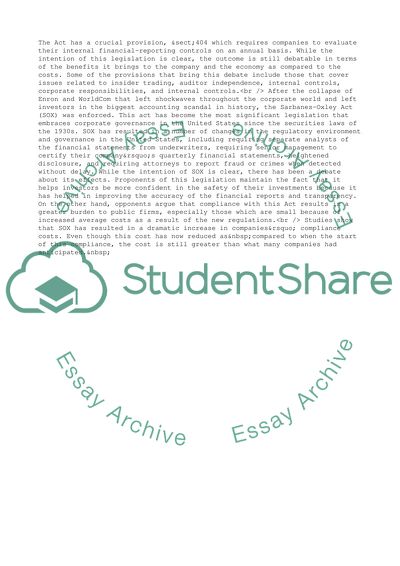Cite this document
(Analysis of the Sarbanes-Oxley Act of 2002 Case Study, n.d.)
Analysis of the Sarbanes-Oxley Act of 2002 Case Study. Retrieved from https://studentshare.org/business/1673449-week-3
Analysis of the Sarbanes-Oxley Act of 2002 Case Study. Retrieved from https://studentshare.org/business/1673449-week-3
(Analysis of the Sarbanes-Oxley Act of 2002 Case Study)
Analysis of the Sarbanes-Oxley Act of 2002 Case Study. https://studentshare.org/business/1673449-week-3.
Analysis of the Sarbanes-Oxley Act of 2002 Case Study. https://studentshare.org/business/1673449-week-3.
“Analysis of the Sarbanes-Oxley Act of 2002 Case Study”, n.d. https://studentshare.org/business/1673449-week-3.


